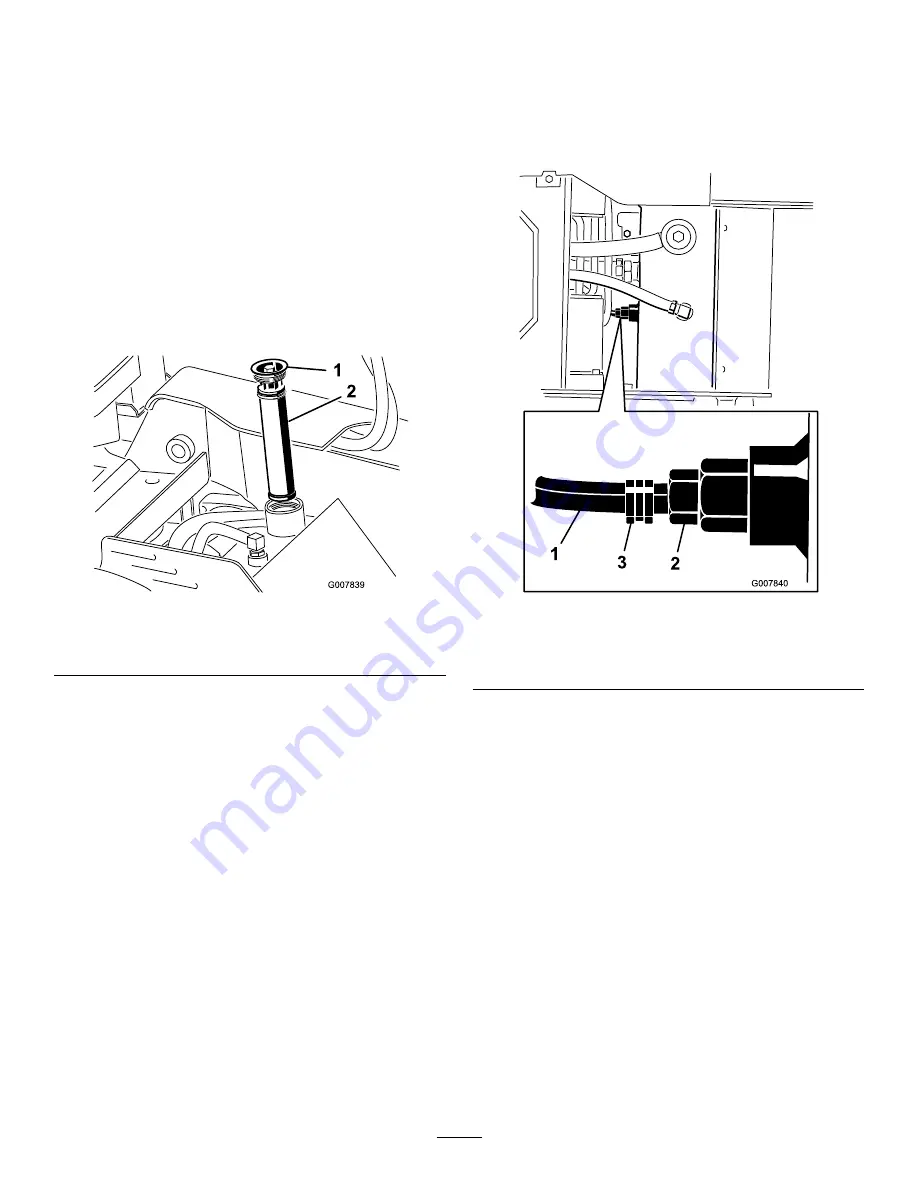
Hydraulic System
Maintenance
Replacing the Hydraulic Filter
Service Interval:
Every 200 hours
1. Position machine on a level surface.
2. Lower the boom and set the parking brake.
3. Stop the engine, remove the key, and wait for all
moving parts to stop before leaving the operating
position.
4. Remove the top cover.
5. Remove and discard the old filter (Figure 57).
Figure 57
1.
Filler cap
2.
Hydraulic filter
6. Install the replacement hydraulic filter and filler cap
(Figure 57) and torque bolt on top to 110 to 140
in-lb (13 to 15.5 N-m).
7. Clean up any spilled fluid.
8. Install the top cover.
Changing the Hydraulic Fluid
Service Interval:
Every 400 hours/Yearly (whichever
comes first)
1. Position the machine on a level surface.
2. Lower the boom and set the parking brake.
3. Stop the engine, remove the key, and wait for all
moving parts to stop before leaving the operating
position.
4. Allow the machine to cool completely.
5. Remove the top cover.
6. Remove the hydraulic tank filler cap and filter
7. Place a drain pan capable of hold 10 US Gallons
(37.8 l) under the hydraulic tank.
8. Pinch the hose clamp and slide the clamp and hose
off of the fitting on the hydraulic tank, allowing the
hydraulic fluid to drain from the hose and tank into
the pan.
Figure 58
1.
Hose
2.
Hydraulic tank fitting
3.
Hose clamp
9. When finished, install the hose onto the fitting and
secure it with the hose clamp.
Note:
Dispose of the used oil at a certified recycling
center.
10. Fill the hydraulic tank with approximately 6 US
gallons (23 l) of 10W-30 or 15W-40 detergent, diesel
engine oil (API service CH-4 or higher); refer to
Checking Hydraulic Fluid.
11. Add 8 fl oz (236 ml) of AMSOIL
®
Slip-Lock™
differential additive or an equivalent differential
additive to the hydraulic tank.
Note:
AMSOIL and Slip-Lock are trademarks of
AMSOIL Inc.
12. Install the hydraulic filter and filler cap (Figure 57)
and torque bolt on top to 110 to 140 in-lb (13 to
15.5 N-m).
13. Start the engine and let it run for a few minutes.
14. Stop the engine.
37












































